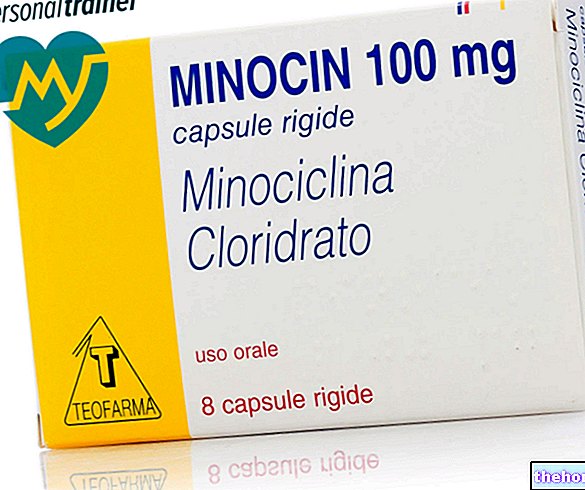Active ingredients: Biperidene
AKINETON 2 mg tablets
Akineton package inserts are available for pack sizes:- AKINETON 2 mg tablets
- AKINETON 4 mg prolonged-release tablets
Why is Akineton used? What is it for?
PHARMACOTHERAPEUTIC CATEGORY
Antiparkinson
THERAPEUTIC INDICATIONS
Adjuvant treatment of all forms of parkinsonism (Parkinson's disease, post-encephalitic parkinsonian syndrome, arteriosclerotic parkinsonian syndrome, neuroleptic extrapyramidal syndrome).
Contraindications When Akineton should not be used
Hypersensitivity to the active substance or to any of the excipients.
Acute glaucoma, mechanical stricture of the gastrointestinal tract, megacolon, intestinal atony and urinary retention syndromes.
Generally contraindicated in pregnancy and lactation (see Special warnings).
Generally contraindicated in children (see Special warnings).
Precautions for use What you need to know before taking Akineton
Due to a possible increase in heart rhythm, in patients with recent heart attack, AKINETON 2 mg Tablets can only be prescribed under close monitoring of the heart rate.
Use with caution in patients with cardiac arrhythmias or prostatic hypertrophy, in the latter case AKINETON 2 mg Tablets may cause disturbances in urination (in such cases a dose reduction is recommended); more rarely urinary retention (in this case it is recommends carbachol as an antidote).
The replacement of other preparations with AKINETON 2 mg Tablets is generally carried out only progressively, that is by slowly decreasing the dose of the previously used drug and at the same time gradually increasing the dose of AKINETON 2 mg Tablets.
The suspension of treatment with AKINETON 2 mg tablets should also be done gradually.
As with all centrally acting drugs, the consumption of alcoholic beverages should be avoided during treatment with AKINETON 2 mg Tablets.
Interactions Which drugs or foods can modify the effect of Akineton
Tell your doctor or pharmacist if you have recently taken any other medicines, even those without a prescription.
Administration of AKINETON 2 mg Tablets in combination with other psychotropic anticholinergic drugs, antiparkinsonian and antispasmodic drugs can potentiate central and peripheral side effects.
The concomitant intake of quinidine may enhance the anticholinergic e ect, especially with regard to cardiac atrioventricular conduction. Simultaneous administration of L-Dopa and AKINETON 2 mg Tablets may accentuate dyskinesia. Parkinsonian symptoms in the presence of tardive dyskinesia are sometimes severe enough to require continuation of anticholinergic therapy Anticholinergic drugs can accentuate the side effects of pethidine on the central nervous system.
The action of metoclopramide and similar drugs on the gastrointestinal tract is antagonized by AKINETON 2 mg Tablets.
Warnings It is important to know that:
Pregnancy and breastfeeding
Ask your doctor or pharmacist for advice before taking any medicine.
As its safety has not yet been established, its use in pregnancy, breastfeeding women and pediatric patients is not recommended.
The amount of biperidene secreted in breast milk is not known.
As the results of animal experiments show, centrally acting anticholinergic drugs such as AKINETON can increase the tendency to seizures; this must be taken into account in the management of prepared persons.
Effects on ability to drive and use machines
In relation to the dose and individual sensitivity, AKINETON 2 mg Tablets may interfere with the ability to react (eg driving vehicles).
Dosage and method of use How to use Akineton: Dosage
The most appropriate dosage for each individual case can only be determined by the doctor.
In general, treatment is started with 1/2 tablet 2 times a day, increasing this dose progressively up to 1 tablet 3 times a day. The latter will be maintained for a few days. The dose will then continue to be slowly increased until further improvement is no longer possible. Then the dose is gradually reduced until the disease deteriorates again.
The optimal dose therefore lies between the maximum reached and the dose that had caused the new worsening. It varies, depending on the case, from 1/2 tablet 3 times a day up to 2 tablets 5 times a day.
If patients do not suffer from intense drooling, the preparation should be administered after meals, otherwise during meals.
Overdose What to do if you have taken too much Akineton
AKINETON intoxication essentially resembles atropine poisoning with peripheral anticholinergic symptoms such as dilated and sluggish pupils, dry mucous membranes, redness, tachycardia, intestinal atony and columnar bladder, hyperthermia, especially in the child, and central nervous system impairment ( with agitation, confusion, disorientation and / or hallucinations). In severe intoxication, cardiorespiratory depression increases.
In case of life-threatening intoxication, an acetylcholine esterase inhibitor capable of overcoming the blood brain barrier, preferably Sostigmine, can be used as an antidote. In addition, cardiovascular and respiratory support, bladder catheterization and, if necessary, cooling may be indicated.
In case of accidental ingestion / intake of an excessive dose of AKINETON, notify your doctor immediately or go to the nearest hospital.
IF YOU ARE IN ANY DOUBT ABOUT THE USE OF AKINETON, CONTACT YOUR DOCTOR OR PHARMACIST.
Side Effects What are the side effects of Akineton
Like all medicines, AKINETON can cause side effects, although not everybody gets them.
The frequencies given below are those used as a basis for the evaluation of undesirable effects:
very common (≥ 1/10)
common (≥ 1/100,
uncommon (≥ 1 / 1,000,
rare (≥ 1 / 10,000,
very rare (
not known (frequency cannot be estimated from the available data).
Undesirable effects may occur particularly at the start of treatment and if the dosage is increased too quickly. Due to the unknown number of patients, the frequency rate of spontaneously recorded undesirable effects cannot be precisely determined.
Infections and infestations
Not known: Mumps
Disorders of the immune system
Very rare: Hypersensitivity
Psychiatric disorders
Rare: Excitation, agitation, fear, confusion, delirium syndromes, hallucinations, insomnia may occur at high doses. Central excitation effects are frequently seen in patients who have symptoms of a brain deficiency and may require a decrease in dosage. There have been reports of temporarily reduced REM sleep (sleep phase characterized by rapid eye movements), characterized by an increase in the time it takes to reach this stage and a decrease in the percentage in the length of this phase in total sleep.
Very rare: nervousness, euphoria.
Nervous system disorders
Rare: fatigue, dizziness and memory disturbances.
Very rare: headache, dyskinesia, ataxia and speech disorders, increased predisposition to seizures and brain seizures
Eye disorders
Very rare: disturbances in accommodation, indistinct vision, ocular hypertension, mydriasis and photosensitivity. Closed-angle glaucoma (control of intraocular pressure) may occur.
Cardiac pathologies
Rare: tachycardia
Very rare: bradycardia
Gastrointestinal disorders
Rare: dry mouth, nausea, stomach upset.
Very rare: constipation
Skin and subcutaneous tissue disorders
Very rare: reduced sweating allergic rash.
Musculoskeletal and connective tissue disorders
Very rare: muscle contraction
Renal and urinary disorders
Very rare: bladder emptying disorder, especially in patients with prostate adenoma (dose reduction), more rarely: urinary retention
General disorders and administration site conditions
Rare: somnolence
Possible gastric disturbances can be avoided by administering AKINETON 2 mg Tablets during or after meals.
Compliance with the instructions contained in the package leaflet reduces the risk of undesirable effects.
Reporting of side effects
If you get any side effects, talk to your doctor or pharmacist. This includes any possible side effects not listed in this leaflet.
You can also report side effects directly via the national reporting system at https://www.aifa.gov.it/content/segnalazioni-reazioni-avverse. By reporting side effects you can help provide more information on safety of this medicine.
Expiry and Retention
Expiry: see the expiry date printed on the package.
The expiry date refers to the product in intact packaging, correctly stored.
Warning: do not use the product after the expiry date shown on the package.
Medicines should not be disposed of via wastewater or household waste. Ask your pharmacist how to dispose of medicines you no longer use. This will help protect the environment.
KEEP THE MEDICINAL PRODUCT OUT OF THE SIGHT AND REACH OF CHILDREN.
Composition and pharmaceutical form
COMPOSITION
One tablet contains: 2.0 mg biperidene hydrochloride. Excipients: corn starch, dibasic calcium phosphate, microcrystalline cellulose, vinylpyrrolidone vinyl acetate copolymer, lactose, magnesium stearate, talc.
PHARMACEUTICAL FORM AND CONTENT
60 tablets of 2 mg
Source Package Leaflet: AIFA (Italian Medicines Agency). Content published in January 2016. The information present may not be up-to-date.
To have access to the most up-to-date version, it is advisable to access the AIFA (Italian Medicines Agency) website. Disclaimer and useful information.
01.0 NAME OF THE MEDICINAL PRODUCT
AKINETON
02.0 QUALITATIVE AND QUANTITATIVE COMPOSITION
1 tablet of 2 mg contains:
biperidene hydrochloride 2.00 mg.
1 prolonged-release tablet of 4 mg contains:
biperidene hydrochloride 4.00 mg.
For the full list of excipients, see section 6.1.
03.0 PHARMACEUTICAL FORM
Tablets.
Prolonged-release tablets.
04.0 CLINICAL INFORMATION
04.1 Therapeutic indications
Adjuvant treatment of all forms of parkinsonism (Parkinson's disease, post-encephalitic parkinsonian syndrome, arteriosclerotic parkinsonian syndrome, neuroleptic extrapyramidal syndrome).
04.2 Posology and method of administration
The most appropriate dosage for each individual case can only be determined by the doctor.
2 mg tablets
In general, treatment is started with ½ tablet 2 times a day, increasing this dose progressively up to 1 tablet 3 times a day. The latter will be maintained for a few days. The dose will then continue to be slowly increased until further improvement can no longer be obtained. Then the dose is gradually reduced until a worsening of the disease occurs again.
The optimal dose therefore lies between the maximum reached and the dose that had caused the new worsening. It varies, depending on the case, from ½ tablet 3 times a day up to 2 tablets 5 times a day.
If patients do not suffer from intense drooling, the preparation should be administered after meals, otherwise during meals.
4 mg prolonged-release tablets
Generally, treatment with AKINETON 2 mg tablets is started, gradually increasing until the most favorable dosage is reached; then we proceed to the administration of AKINETON 4 mg Prolonged-release tablets.
The average dose is 1 - 2 to 3 4 mg prolonged-release tablets spread throughout the day.
If patients do not suffer from intense drooling, the preparation should be administered after meals, otherwise during meals.
04.3 Contraindications
Hypersensitivity to the active substance or to any of the excipients listed in section 6.1.
Acute glaucoma, mechanical stenosis of the gastrointestinal tract, megacolon, intestinal atony and urinary retention syndromes.
Generally contraindicated in pregnancy and lactation (see p. 4.6).
Generally contraindicated in children (see p. 4.4).
04.4 Special warnings and appropriate precautions for use
As its safety has not yet been established, its use in pediatric patients is not recommended.
Due to a possible increase in heart rhythm, in patients with recent heart attack, AKINETON can only be prescribed under close monitoring of the heart rate.
Use with caution in patients with cardiac arrhythmias or prostatic hypertrophy, in the latter case AKINETON can cause disturbances in urination (in such cases a reduction of the dose is recommended); more rarely urinary retention (in this case it is recommended as antidote carbachol) ).
The replacement of other preparations with AKINETON 2 mg Tablets, AKINETON 4 mg Prolonged-release tablets is generally carried out only progressively, i.e. slowly decreasing the dose of the previously used drug and at the same time gradually increasing the dose of AKINETON.
Discontinuation of treatment with AKINETON 2 mg tablets, AKINETON 4 mg prolonged-release tablets should also be done gradually.
As with all centrally acting drugs, the consumption of alcoholic beverages should be avoided during treatment with AKINETON.
As the results of animal experiments show, centrally acting anticholinergic drugs such as AKINETON can increase the tendency to seizures; this must be taken into account in the management of prepared persons.
04.5 Interactions with other medicinal products and other forms of interaction
Administration of AKINETON in combination with other anticholinergic psychotropic drugs, antiparkinsonian and antispasmodic drugs may potentiate central and peripheral side effects. The simultaneous intake of quinidine can enhance the anticholinergic effect, especially with regard to cardiac atrioventricular conduction. The simultaneous administration of L-Dopa and AKINETON can accentuate dyskinesia. Parkinsonian symptoms in the presence of tardive dyskinesia are sometimes so severe as to impose continuation of anticholinergic therapy Anticholinergic drugs may accentuate the side effects of pethidine on the central nervous system.
The action of metoclopramide and similar drugs on the gastrointestinal tract is antagonized by AKINETON.
04.6 Pregnancy and lactation
As its safety has not yet been established, its use in pregnant and breastfeeding women is not recommended.
The amount of biperidene secreted in breast milk is not known.
04.7 Effects on ability to drive and use machines
In relation to the dose and individual sensitivity, AKINETON can interfere with the ability to react (for example driving vehicles).
04.8 Undesirable effects
The frequencies given below are those used as a basis for assessing undesirable effects.
very common (≥1 / 10)
common (≥1 / 100,
uncommon (≥1 / 1,000,
rare (≥1 / 10,000,
very rare (
not known (frequency cannot be estimated from the available data).
Undesirable effects may occur particularly at the start of treatment and if the dosage is increased too quickly. Due to the unknown number of patients, the frequency rate of spontaneously recorded undesirable effects cannot be precisely determined.
Infections and infestations
Not known: mumps.
Disorders of the immune system
Very rare: hypersensitivity.
Psychiatric disorders
Rare: Excitation, agitation, fear, confusion, delirium syndromes, hallucinations, insomnia may occur at high doses. Central excitation effects are frequently seen in patients who have symptoms of a brain deficiency and may require a decrease in dosage. There have been reports of temporarily reduced REM sleep (sleep phase characterized by rapid eye movements), characterized by an increase in the time it takes to reach this stage and a decrease in the percentage in the length of this phase in total sleep.
Very rare: nervousness, euphoria.
Nervous system disorders
Rare: fatigue, dizziness and memory disturbances.
Very rare: headache, dyskinesia, ataxia and speech disorders, greater predisposition to seizures and cerebral crises.
Eye disorders
Very rare: disturbances in accommodation, indistinct vision, ocular hypertension, mydriasis and photosensitivity. Closed-angle glaucoma (control of intraocular pressure) may occur.
Cardiac pathologies
Rare: tachycardia.
Very rare: bradycardia.
Gastrointestinal disorders
Rare: dry mouth, nausea, stomach upset.
Very rare: constipation.
Skin and subcutaneous tissue disorders
Very rare: reduced sweating, allergic rash.
Musculoskeletal and connective tissue disorders
Very rare: muscle contraction.
Renal and urinary disorders
Very rare: bladder emptying disorder, especially in patients with prostate adenoma (dose reduction), more rarely: urinary retention.
General disorders and administration site conditions
Rare: somnolence.
Gastric disturbances can be avoided by administering AKINETON 2 mg tablets during or after meals.
Reporting of suspected adverse reactions
Reporting of suspected adverse reactions occurring after authorization of the medicinal product is important as it allows continuous monitoring of the benefit / risk balance of the medicinal product. Healthcare professionals are asked to report any suspected adverse reactions via the national reporting system. "address https://www.aifa.gov.it/content/segnalazioni-reazioni-avverse.
04.9 Overdose
AKINETON intoxication essentially resembles atropine poisoning with peripheral anticholinergic symptoms such as dilated and sluggish pupils, dry mucous membranes, redness, tachycardia, intestinal atony and columnar bladder, hyperthermia, especially in the child, and central nervous system impairment ( with agitation, confusion, disorientation and / or hallucinations). In severe intoxication, cardiorespiratory depression increases.
In case of life-threatening intoxication, an acetylcholine esterase inhibitor capable of overcoming the blood brain barrier, preferably physostigmine, can be used as an antidote. In addition, cardiovascular and respiratory support, bladder catheterization and, if necessary, body cooling may be indicated.
05.0 PHARMACOLOGICAL PROPERTIES
05.1 Pharmacodynamic properties
Therapeutic drug category: Antiparkinsonian.
ATC code: N04AA02.
Biperidene has a strong central anticholinergic action which differs in its mechanism of action from other synthetic antiparkinsonian drugs.
This pharmacological property finds useful application in the clinic in specifically resolving muscle stiffness resulting from dysregulation of the extrapyramidal system.
A favorable clinical effect is also observed on the other symptoms of Parkinson's disease.
The peripheral anticholinergic activity is considerably lower than that of atropine, in fact the use of biperidene is associated with a low incidence of parasympatholytic secondary effects.
Unlike L-dopa, biperidene, thanks to its central antagonism to acetylcholine, exerts a very pronounced inhibitory action on extrapyramidal side effects caused by therapies with psychotropic drugs (especially neuroleptics).
05.2 Pharmacokinetic properties
The results obtained in humans indicate that biperidene in oral formulations is rapidly and almost completely absorbed in the gastrointestinal tract.
After taking 4 mg of instant-release biperidene tablets (AKINETON), the plasma concentration of the drug follows a bicompartmental kinetics with a maximum peak concentration (Cmax) of 4.1 ± 0.9 ng / ml and a peak time (Tmax) between 0.5-2 h; after this increase, a decline in plasma concentration is observed with a rapid initial distribution phase (t½α = 1.5 h) followed by a slower terminal elimination phase (t½β = 21 ± 3.1 h).
After taking 4 mg of biperidene in the slow-release formulation (AKINETON 4 mg prolonged-release tablets) a first plasma peak (0.41-1.44 ng / ml) is observed after 2-6 h followed by a second peak, the main one (Cmax = 0.59-2.17 ng / ml) after 10-12 hours (Tmax).
The AUC0-24h of the two tablet formulations are comparable (AUC Akineton = 16.7 ± 4.7 ng / mlxh; AUC0-24h AKINETON 4 mg Prolonged-release tablets = 15.4 ± 6.5 ng / mlxh). As for AKINETON 4 mg Prolonged-release tablets, the profile of the serum concentration curve of the drug demonstrates the persistence in circulation of effective concentrations even after 8 hours. At 24 h after taking 4 mg of biperidene in slow-release tablet formulation, the plasma concentration (about 0.5 ng / ml) is approximately twice that determined by taking instant-release tablets. After 48 hours of intake, plasma concentrations are at the limit of the detection level for both tablet formulations.
Biperidene has a high apparent volume of distribution (Varea = 24 ± 4.1 l / kg), indicating a marked tissue penetration, while the "high clearance (11.6 ± 0.8 ml / min / kg) reflects the" extensive metabolic elimination since no unchanged biperidene is detected in the urine.
Biperidene is metabolized by hydroxylation.
The identification of the single metabolites shows that in about 60% of the administered dose only the bicyclic heptenic ring is hydroxylated, the remaining 40% has an OH group in the piperidine part of the molecule.
05.3 Preclinical safety data
Toxicological tests have shown that in common laboratory animals biperidene is well tolerated (LD50: rat po 713 mg / kg; dog po 308 mg / kg; rat iv 43.04 mg / kg; dog iv 36.33 mg / kg , without substantial differences between the two sexes).
Biperidene was administered orally to Beagle dogs at dosages of 6, 20, 63 and 200 mg / kg over a period of 6 months.
In the rat it was administered in oral doses of 30, 95 and 300 mg / kg for periods of 9 and 15 months.
Clinical tests, blood and urine tests, and various serum biochemical tests were performed periodically during these periods.
Biperidene was well tolerated by the dog at dosages ranging from 6 to 63 mg / kg.
The 200 mg / kg dose was lethal after a dosing period of more than 6 weeks.
No drug-related adverse effects were observed in rats treated with doses of 30 mg / kg. The mortality rate of rats treated with doses of 95 and 300 mg / kg was higher than that of controls.
Macroscopic and microscopic examinations of the organs of Beagle dogs and rats did not reveal changes attributable to the drug.
Following oral administration of biperidene to pregnant rats (Donrew) and pregnant rabbits (ICR-JCL) at doses up to 12 mg / kg, no drug-related malformations of the fetus were observed.
06.0 PHARMACEUTICAL INFORMATION
06.1 Excipients
2 mg Tablets
Corn starch, dibasic calcium phosphate, microcrystalline cellulose, vinylpyrrolidone vinyl acetate copolymer, lactose, magnesium stearate, talc.
4 mg Prolonged-release tablets
Corn starch, microcrystalline cellulose, carnauba wax, hydroxypropylcellulose, lactose, magnesium stearate, methylhydroxypropylcellulose, yellow iron oxide (E 172), polyethylene glycol 400, polyethylene glycol 6000, polyvinylpyrrolidone, colloidal silica, sodium laurilsulfate, talc, titanium dioxide (171) .
06.2 Incompatibility
AKINETON is incompatible with chlorprothiazene and promazine.
06.3 Period of validity
5 years.
06.4 Special precautions for storage
None.
06.5 Nature of the immediate packaging and contents of the package
Carton containing 60 tablets of 2 mg in blister packs (aluminum / PVC).
Carton containing 50 prolonged-release tablets of 4 mg in blister packs (aluminum / PVC - PVDC).
06.6 Instructions for use and handling
None.
07.0 MARKETING AUTHORIZATION HOLDER
Pharmaceutical Laboratory S.I.T. S.r.l. - Via Cavour 70 - 27035 Mede (PV).
08.0 MARKETING AUTHORIZATION NUMBER
60 tablets of 2 mg AIC 028330013
50 prolonged-release tablets of 4 mg AIC 028330037
09.0 DATE OF FIRST AUTHORIZATION OR RENEWAL OF THE AUTHORIZATION
Date of first authorization: 1 October 1991
Date of most recent renewal: 29 July 2014
10.0 DATE OF REVISION OF THE TEXT
29/10/2014




























